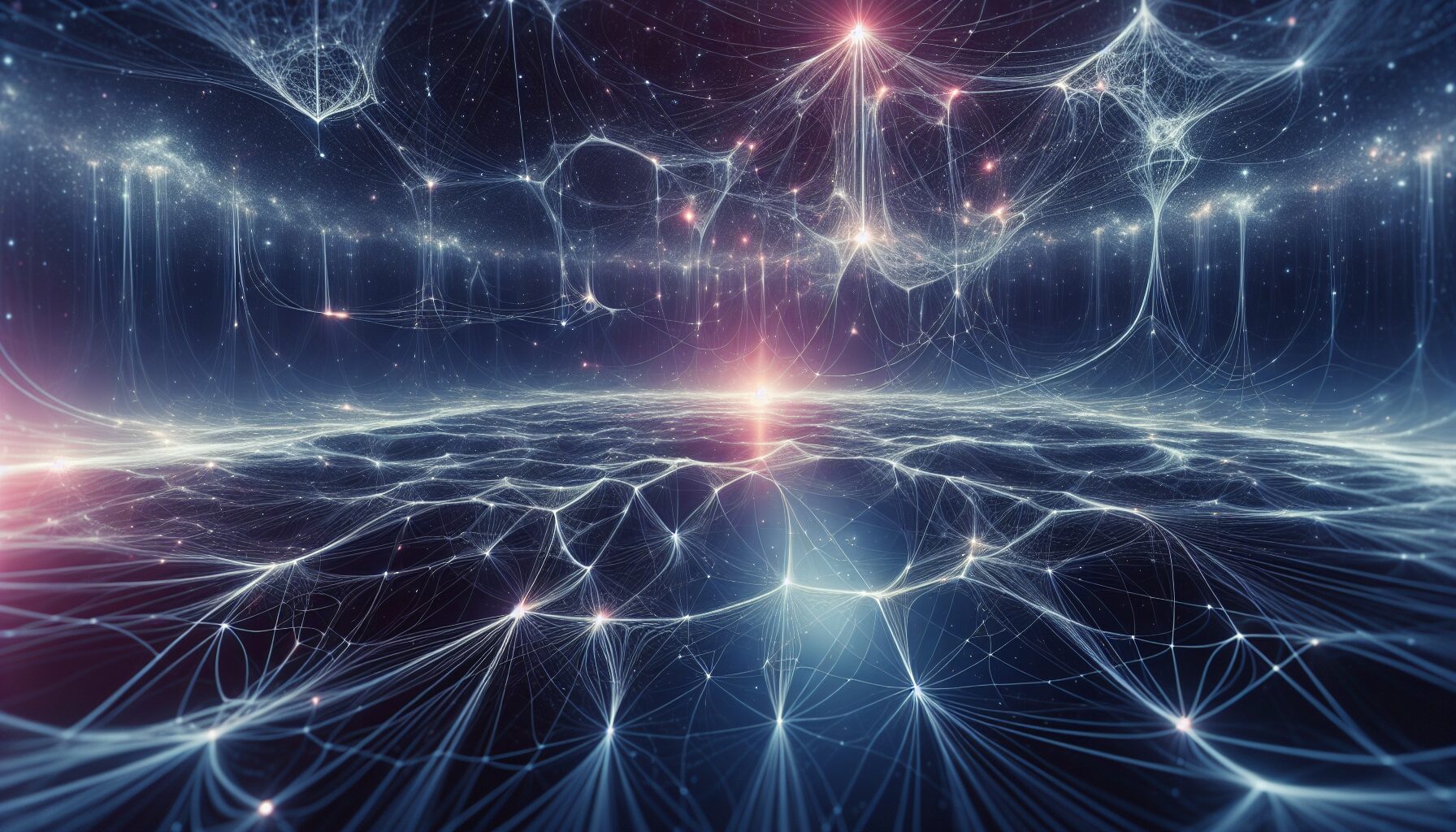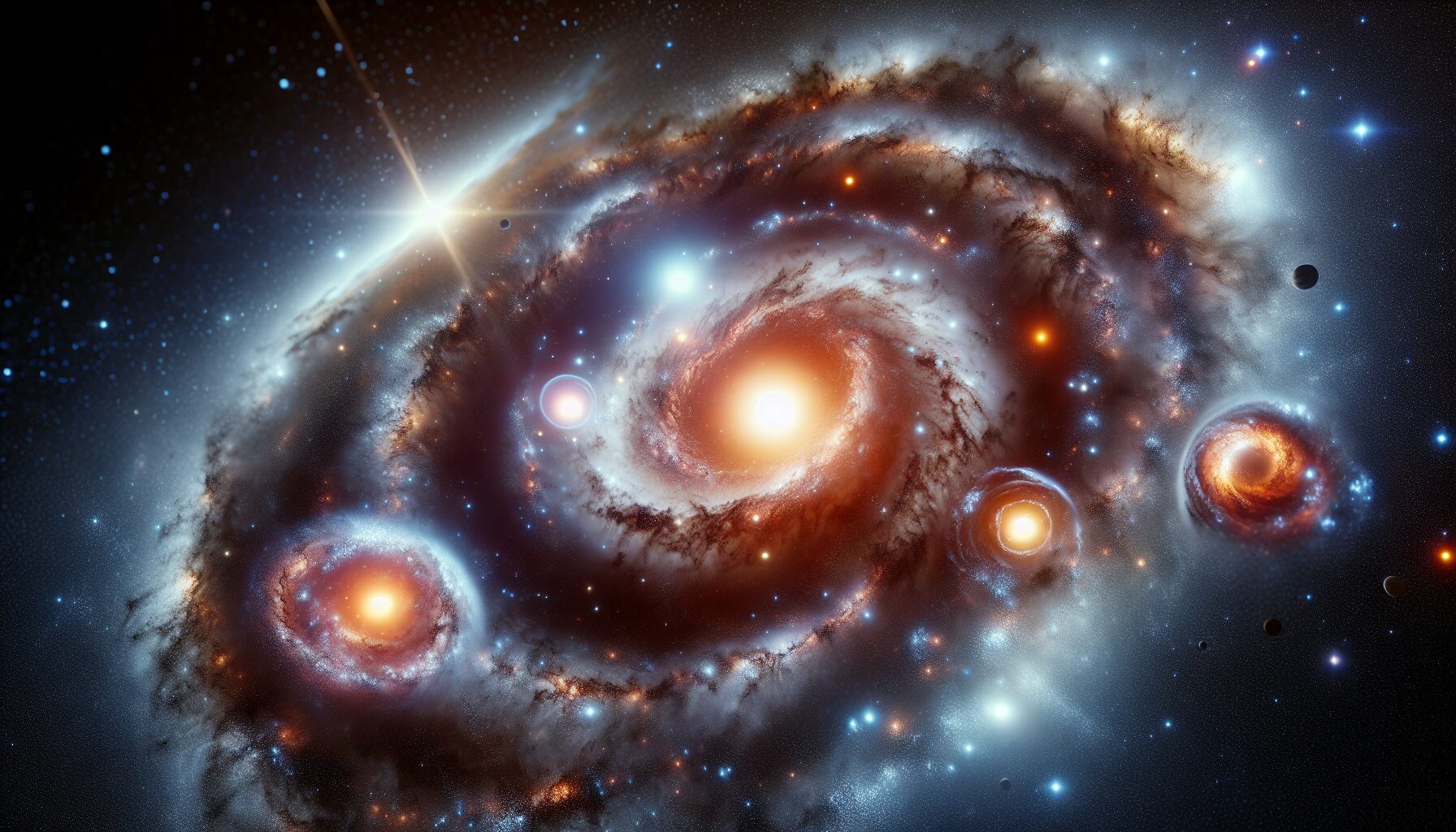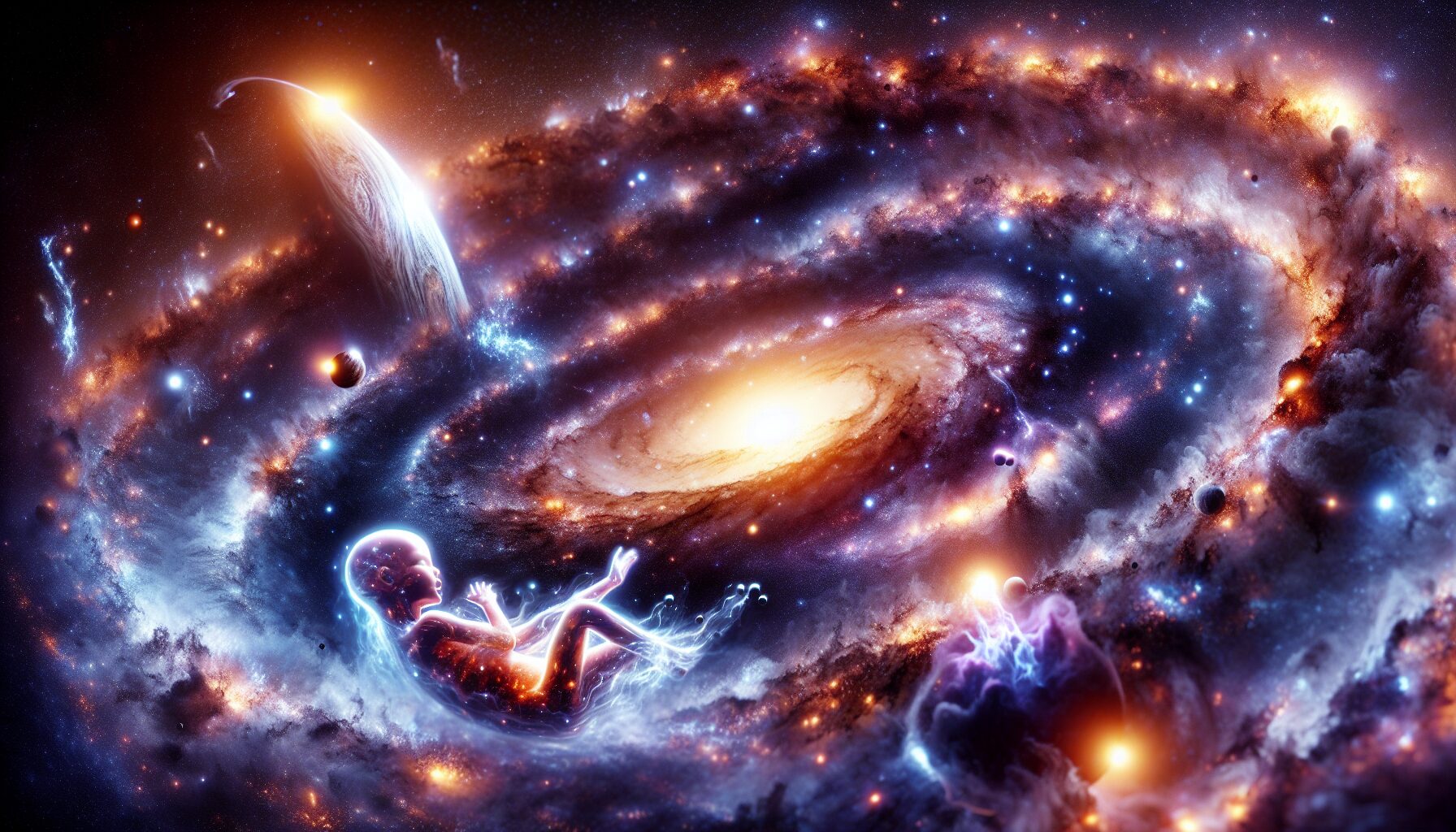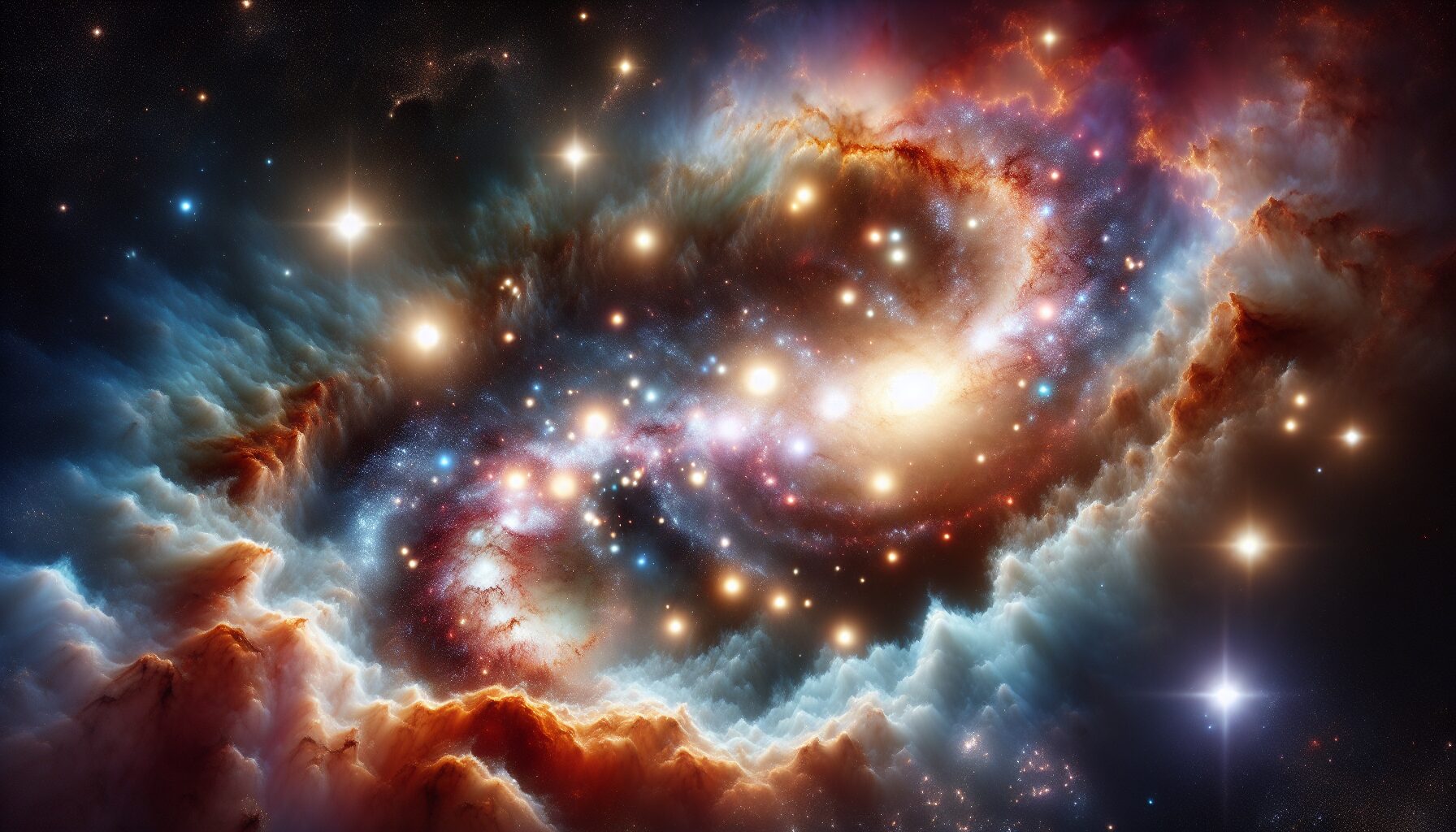The Cosmic Web: Strings of Matter Holding Empty Death
The universe, in its vastness, often confronts us with enigmatic and complex structures that challenge our understanding of space and time. Among these mysteries, the Cosmic Web stands out as one of the most intriguing—a grand tapestry of matter weaving across the universe, connecting galaxies and galaxy clusters with tendrils of dark matter and baryonic material. This intricate network not only forms the large-scale structure of the cosmos but also holds within it the secrets of empty spaces—regions of ‘voids’ that reflect the enigmatic character of the universe’s evolution.
The Structure of the Cosmic Web
Scientists categorize the Cosmic Web as a colossal network comprising four main components:
- Galaxy Filaments: These are the dense, elongated threads connecting large structures of galaxies across the universe.
- Galaxy Clusters: At the intersections of the web are clusters, enormous gatherings of galaxies bound by gravity.
- Walls: The broad sheets that outline the boundaries of voids and connect the filaments.
- Voids: Vast expanses of seemingly empty space, containing fewer galaxies and matter than other regions.
The cosmic web’s architecture arises from fluctuations in the density of matter following the Big Bang. Over billions of years, gravity amplified these fluctuations, sculpting the expansive web-like structure observed today.
The Role of Dark Matter
Dark matter is an essential component of the Cosmic Web. Invisible and detectable only through its gravitational effects, dark matter forms the scaffolding over which visible matter accumulates. Dr. Katie Mack, a cosmologist at North Carolina State University, explains, “The strings of the Cosmic Web are cosmic ‘superhighways’ of dark matter, calling ordinary matter to them with their gravitational pull” (Astrobites).
Simulations such as the Millennium Simulation have visualized these structures, highlighting how the gravity of dark matter influences the distribution of galaxies and intergalactic gas within the web.
The Mystery of Cosmic Voids
Contrasting starkly with the dense filaments and clusters are the Cosmic Voids, which comprise a significant portion of the universe’s volume. Despite being mostly empty, cosmic voids are crucial for understanding the universe’s origin and fate. According to a study in the Astronomy & Astrophysics journal: “Cosmic voids are unique laboratories for testing models of cosmic geometry, gravitational physics, and the influence of dark energy” (A&A Journal).
“In the absence of dark matter’s pull, the voids reveal the universe’s accelerated expansion,” adds cosmologist Dr. Sabine Hazan, emphasizing the role these empty regions play in studying dark energy.
The Web in the Grand Design
The Cosmic Web’s beauty lies in its ability to underline both the complexity and simplicity of the universe. On one hand, it reflects the intricate dance of gravity and relativity where immense structures emerge from minute quantum fluctuations. On the other, it is evidence of a coherent pattern that underlies the diverse array of galactic phenomena.
Researchers at the National Institute of Astrophysics posit that studying the cosmic web not only unravels the universe’s intricate past but also guides us in predicting its future (INAF). The dynamic movements within these cosmic highways continue to shape galaxy evolution, star formation, and even influence the potential habitability of planets.
Conclusion
The Cosmic Web, in all its grandeur and mystery, presents an everlasting frontier for astronomical research. As technology and methodology advance, future explorations will delve deeper into these cosmic corridors, to not only map its structure but decode the phenomena it presents—from dark matter’s elusive nature to the eerie expanse of voids.
In the words of astrophysicist Dr. Neil deGrasse Tyson, “We are part of this universe, and maybe more importantly, the universe is in us”—a sentiment that the study of the Cosmic Web deeply legitimizes, uniting all cosmic phenomena in a sublime expression of universal unity.



